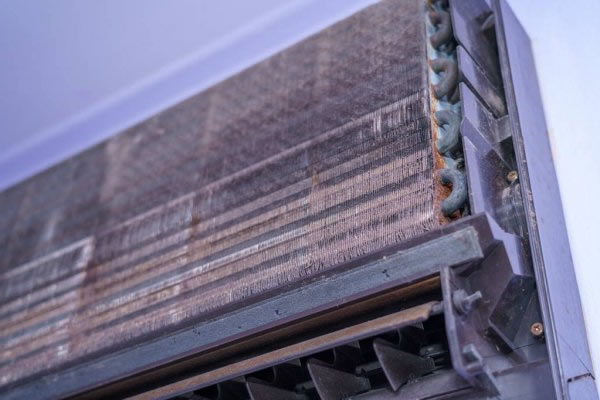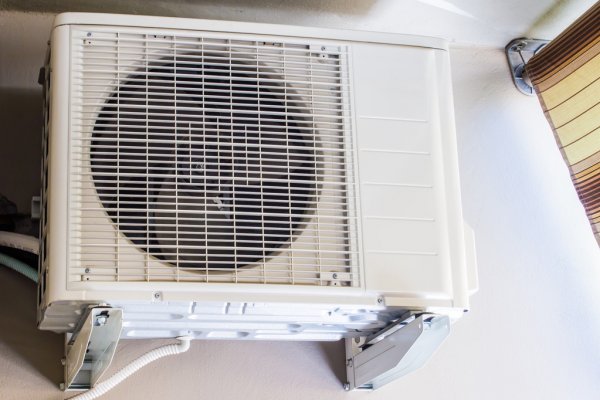The list of air conditioner parts can seem daunting, but this guide is here to help you! We’ll cover everything from condensers and compressors to thermostats and refrigerants. You’ll also learn about the different types of systems available so you can make a better decision on which one will work best for your needs.
Before you jump into the list, let’s understand the basic principle of the air conditioner.
The Basic Principle of Air Conditioner
All air conditioners systems function or have similar working principles. Heat will be removed from one area and replaced by cool, dry air. The hot air is then expelled to the normal outside air. With this simple example, we can say it works almost like a car radiator, but rather than running water to cool an engine, it uses refrigerant, which runs through the condenser.
As such, air conditioners have about three primary stages: –
- The evaporator, which contains the sub-cooled refrigerant
- The air blower, which directs chilled dry air into a room through blower motor & fan
- The condenser, which contains high temperature and where cooling takes place
The air blower & evaporator stages are parts of the indoor air conditioning unit, and the condenser is part of the outdoor unit.
With these three stages, an air conditioner can remove heat from a building through its indoor system and transfer the heat outdoor, where it is expelled into the environment. All this is made possible by the characteristics of a refrigerant.
Aircon Refrigerant
Refrigerant is a type of chemical that has the ability to absorb heat and release heat quickly. As such, the refrigerant is constantly being pumped through the system. The function of the outside fan is to blow air over the hot coil, which helps transfer heat from the refrigerant to the outdoor air.
Let’s look at each of the components that reside in the indoor units and outdoor units.
The parts in the indoor aircon unit
Evaporator Coil

Evaporator coils are used in air conditioners to facilitate heat absorption from indoor spaces. They’re usually made of copper, a material that provides easy heat transfer and is commonly equipped with additional fins or vanes for increased surface area. Evaporators also contain the refrigerant necessary for this process between two chambers — one cold and one hot—that use fans to circulate cool air across homes’ living rooms.
Printed Circuit Board (PCB)
An air conditioner PCB is the motherboard of an AC unit. These devices are similar to a computer’s ‘motherboard’ or CPU, but it also serves as a wiring for various components like resistors, capacitors and transistors. The connections between these different components are known as conductive tracks, which connect all necessary wires with copper layers atop fibreglass silkscreening
Thermostat
The thermostat of an AC is used to maintain the desired room temperature and save energy. These devices work by sensing changes in temperature to turn on or off the unit as needed. Thermostats come manual or automatic, but all types of air conditioners have one included with them for convenience
Thermistor
A thermistor is a temperature sensor found in most modern air conditioning systems that regulate the temperatures of your room. The thermostat detects room temperature and sends back resistance signals, which automatically adjust the room’s control system for improved comfort.
Capacitor
An air conditioner capacitor is a small cylindrical object that stores charge in an electrostatic field. When somebody switches their AC on, it delivers the electric boost needed to turn the unit and provide continuous power!
Blower Fan
The blower fan is one of the key components in any air conditioning system. It blows cool and fresh air into your home, which creates a cooling effect that leaves you feeling refreshed after being exposed to its chilly breeze for too long.
Blower Motor
The blower motor on an AC unit is there to make the fan blades move, which moves air through the system. This airflow ensures that you can feel cool blissful breezes.
Air Filter
An air conditioner’s filter uses a porous structure that prevents large and coarse particles from passing through. Its purpose is to remove pollutants, like pollen, grease, dust or smokes, etc., to improve the indoor environment’s quality by preventing all sorts of allergens and contaminants from infiltrating your home.
Drain Pan
A drain pan is a crucial piece of an air conditioning system that catches the condensation from inside it. The water then drains through pipes to be dumped out or discharged outside, depending on its location.
The parts in the outdoor aircon unit (Condenser Unit)

Compressor
Compressors move the refrigerant between evaporator and condenser coils to ensure it will change into either gas or liquid as needed so that your system can function properly. Compressors work much like blood in our bodies, pumping through the cooling solution without stopping until they have done their duty, making sure you’re always cool!
Condenser Coil
Condenser coils are devices that transfer heat from one medium to another. They can be found in air conditioners, where their purpose is to remove outside the warmth and vent it into the space being cooled.
Condenser coils come equipped with a fan that pulls cool air over them while they condense water vapour back out of the hot gas stream coming through these tubes at high pressure
Expansion Valve
Expansion valves help to manage the flow of liquid refrigerant inside an air conditioning unit. This device changes high pressure into low pressure, which is then sent through the evaporator and condenser before finally reaching a compressor again.
Aircon Bracket
An aircon wall bracket is a metal or plastic fixture that fastens to an exterior wall using concrete bolts and a flat plate. The unit attaches to the horizontal arms of these brackets, which means it sits above ground level.
The aircon parts connecting the indoor and outdoor unit
Aircon Piping
A split-type air conditioner, it features 2 different types of piping for different uses. These are the copper pipes (primary function: to transfer refrigerant through the whole system) and the water drain pipes( primary function: transporting condensed humidity away from your home).
Drain Pipe
The drain pipe is an important part of the air conditioning system that helps protect against humidity and water damage. The condensate drains through a pipe connected to the whole unit, so it can properly remove all moisture from evaporator coils while also draining outside your home for safekeeping.
Aircon Insulation
A typical aircon insulator is made up of wide black foam wires that protect the copper pipes of an air conditioner unit. The insulation works like a sponge, soaking up condensation water on top and in-between metal piping for better protection against dripping or leakages.
Aircon Vent
Air conditioning vents are there to help keep the air pressure in your home or office at a comfortable level. You may not realize it, but these openings also serve an additional function: they filter out any dust and debris that might have made its way into your house!
Isolator Switch
Air conditioning isolator switches are devices or systems that isolate a particular circuit for maintenance. Preventing currents from passing through, they’re used to ensure the safety of engineers performing repairs and improvements on circuits.
What Are The Four Major Components In An Air Conditioning System?
There are four most important components in an air conditioner. What do we mean by the term ‘Major components’? Well, it simply refers to components that cannot lack in any type of AC. In other words, an air conditioner cannot be an air conditioner without these four components. As such, they include: –
- The evaporator: – As you probably know, the evaporator is found on the cold side of an AC. Its primary function is to receive liquid refrigerant and then turns it into gas where it is cooled and dehumidified. The gas then absorbs heat from the air and then transferred to the condenser.
- The condenser: – The condenser is the exact opposite of the evaporator, and its primary function is quite the opposite of the evaporator as well. As such, it is located on the hot side. It helps transfer the collected heat to the air and turn the refrigerant back to liquid.
- The compressor: – This is an electric pump that works hand in hand with the condenser to turn the refrigerant to liquid and return the liquid to the evaporator. As such, it is located on the hot side of the AC.
- Expansion Valve: – The expansion valve works together with the evaporator but often located in-between the condenser and evaporator. Its primary function is to regulate the amount of liquid refrigerant that goes to the evaporator.
What Is The Most Expensive Part In An AC To Repair or Replace?
In a nutshell, the compressor is the most expensive part of an AC.
Conclusion
The air conditioner is a vital part of any home or building. It’s essential to understand the different parts and how they work together in order to maintain your system for years of use. We’ve outlined some of these components, but there are many others you may not be familiar with.
If you need more help understanding what each component does, please contact us! Our team has been working in this industry for over 18 years, and we’re happy to share our expertise with anyone who needs it–whether that means installing new equipment or repairing an existing one.
from Cool Earth Aircon Services https://www.coolearth.com.sg/aircon-parts/
via Cool Earth Aircon Services
No comments:
Post a Comment